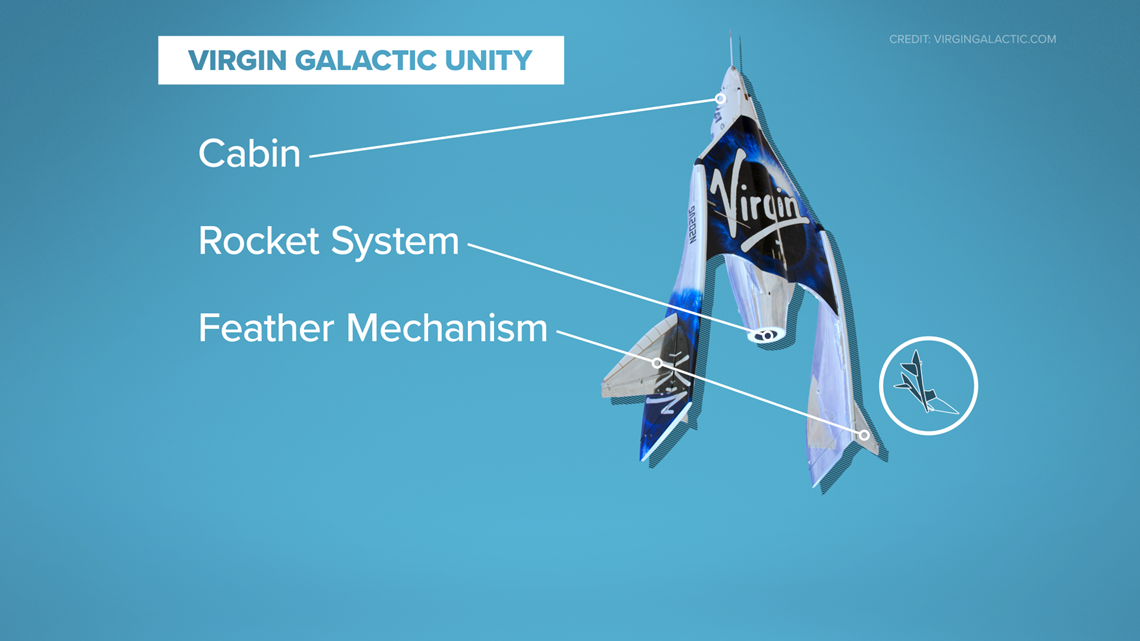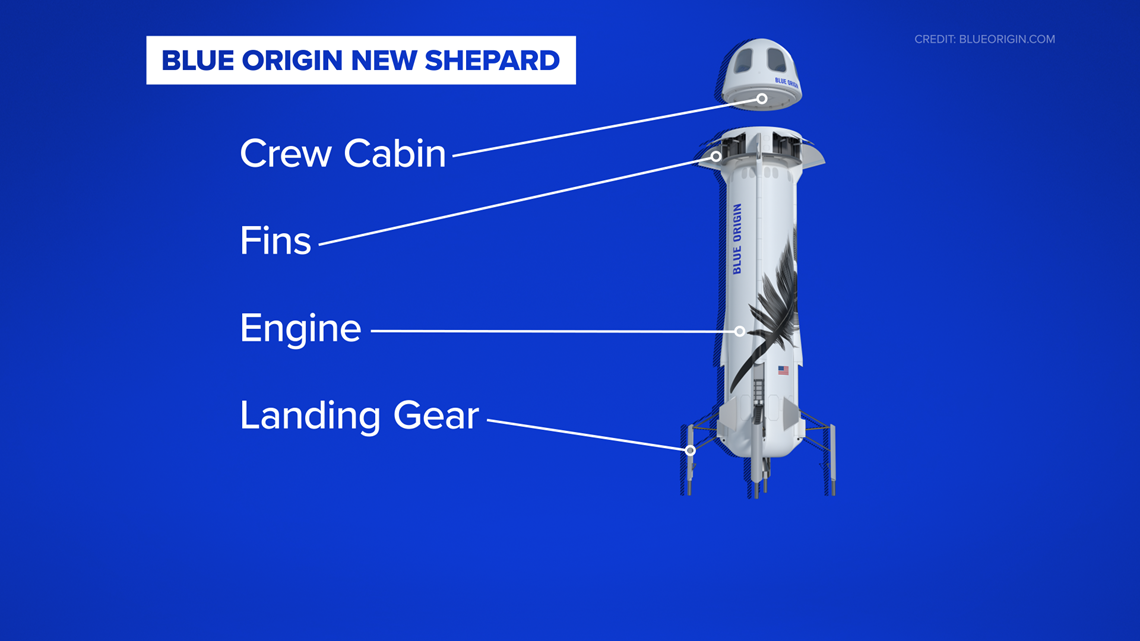HOUSTON — We are watching a billionaire space race unfold as Jeff Bezos and Richard Branson attempt to one-up each other in zero gravity.
It appears Branson has the lead after zooming 53.5 miles up on July 11. That’s three-and-a-half miles beyond what NASA and the FAA consider the "boundary" of space.
Bezos will attempt something similar on July 20, but in a ship that looks wildly different.
So let’s break down the two ships.


The one you saw in action on July 11 was Virgin Galactic’s VSS Unity. Of the two, it more closely resembles the space shuttle, though it's still very unique.
The cabin is up front and features six seats with plenty of windows for passengers to enjoy the view as they leave earth.
These feather mechanisms allow the wings to extend, as they did at takeoff, and contract, as they did when it was time to come down.
The most significant differences, however, may be the method of reaching the threshold of space. Unity hitched a ride on Virgin's twin-fuselage carrier jet, called VMS Eve.
Compare that to the New Shepard, the ship Bezos will use for his sub-orbital flight. It will launch more like a traditional rocket.


The cabin sits on top of the rocket, which has fins at the top and bottom to guide its course.
The capsule is entirely automated, unlike Richard Branson's Virgin Galactic rocket plane that required two pilots to get him to space and back a week ago.
Its crewed flight with Bezos on board, his brother, an 82-year-old aviation pioneer and a teenage tourist is set to take off from West Texas on Tuesday, July 20.
We’ll have to see if it will go deeper into space than Branson’s Unity or if Branson keeps the lead in the billionaire space race.

